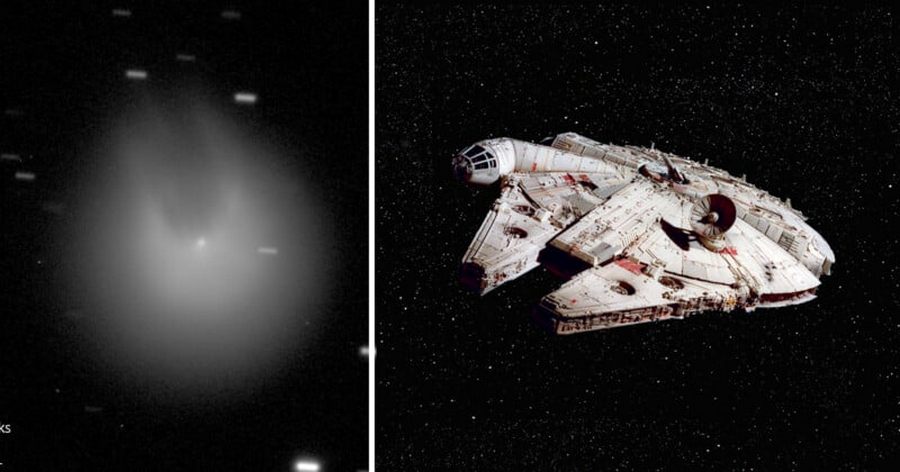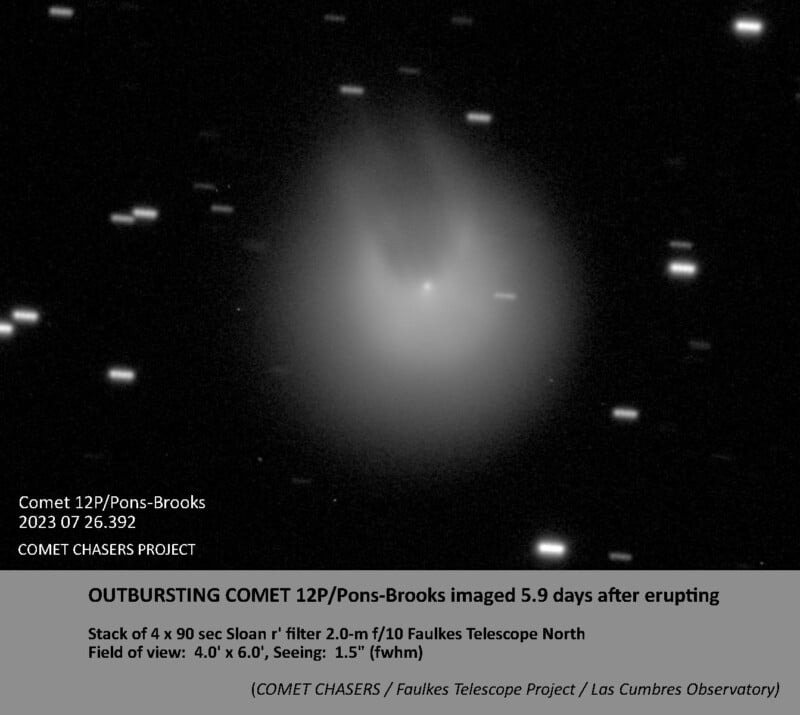“Comet Chasers” took a picture of a comet that suddenly became 100 times brighter and grew horns thrown back in such a way that it looked like the Millennium Falcon, a fictional spaceship from the films of the Star Wars saga.

Comet 12P/Pons-Brooks startled astronomers after it abruptly flared up on July 20, and double plumes of debris escaped from its core, giving it the shape of a fantastic spaceship.
The Comet Chasers team is a group of researchers led by Helen Asher from Cardiff University in Wales, UK. They use the Las Cumbres Observatory’s global network to track comets in the Solar System. SpaceWeather reports that the comet is now shining with the same brightness as an 11th magnitude star, making it an easy target for amateur telescopes.
Comet 12P/Pons-Brooks will reach maximum brightness in April, May and June 2024, when it passes close to the Sun. That’s when it will become a bright object visible to the naked eye.

Its orbital period is 71 years. But the time of its appearance in 2024 is important, because it will fall just on the total solar eclipse, which will happen on April 8, 2024. At this point, the comet will be visible during the eclipse.
So far, scientists are wondering what could have prompted comet 12P/Pons-Brooks to suddenly become brighter. One theory is that the comet may have an active ice volcano. According to Richard Miles of the British Astronomical Association, the “magma” on such a planet is a cold mixture of liquid hydrocarbons and dissolved gases located below the surface. Ice volcanoes can explode when exposed to sunlight.
Where is Comet 12P/Pons-Brooks now?
The Millennium Falcon is now in the constellation Draco in the northern sky. Despite the increased brightness, it cannot be seen with the naked eye or through binoculars, as at least a 15-centimeter telescope is now needed to observe the celestial object.
12P/Pons-Brooks 2023 jul. 22 22.22 UT 30x40sec RGB 16″/3.2 QHY600 Michael Jäger G00 pic.twitter.com/2AtL5J5sXt
— Michael Jäger (@Komet123Jager) July 23, 2023
The Pons-Brooks comet is sometimes also called Galilean, because its 71-year orbit around the Sun makes it look like Halley’s comet, which takes about 75 years to make an orbit around the Sun. The comet was named after the Frenchman Jean-Louis Pons, who first discovered it in 1812, and later the American William R. Brooks confirmed this discovery in 1883.
Earlier we reported on how the main comet of 2024 got a name.
Follow us on Twitter to get the most interesting space news in time
https://twitter.com/ust_magazine

